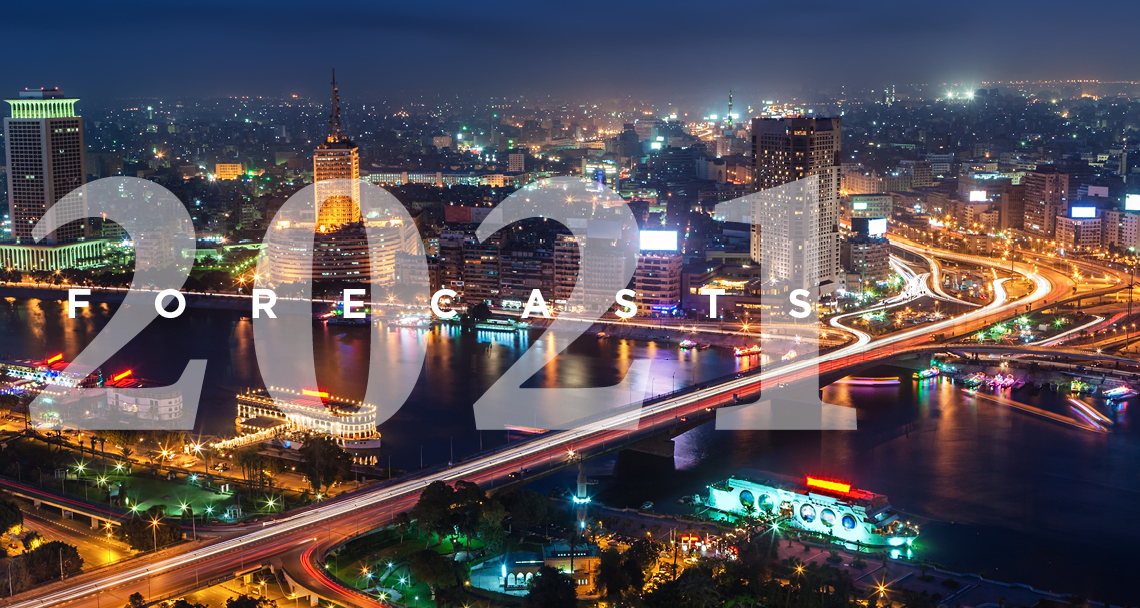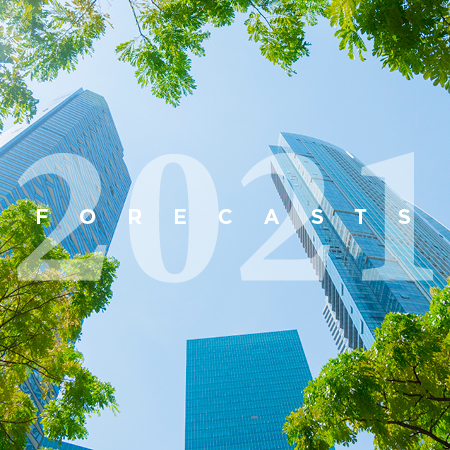In 2020, real estate investment dropped substantially due to Covid-19 related travel restrictions. In Europe and the Middle East, investors have focused increasingly on their local markets, reflecting the ‘flight to familiarity’ among cross-border investors.
Covid-19 has brought forward a number of structural changes that were already underway. Working from home has become a common practice (from 9% to 40%) and online shopping penetration has accelerated (from 12% to 16%). This has left many office buildings underutilised, causing concerns amongst investors about security of income.
In times of uncertainty, investment strategies shift towards low-risk assets with defensive characteristics. In 2020, investors competed for core assets, driving further yield compression. Concern about the rising importance of teleworking has had a negative impact on demand for secondary offices, reducing the overall share of the office sector from 40% to 35% (Q1-Q3). The acceleration of digitalisation and technological use has spurred demand for industrial assets such as logistics and data centres. Stability of income from the residential sectors has attracted new capital, raising its share from 12% to 17% (Q1-Q3).
In 2021, we expect investment strategies to continue to focus on low risk and income stability. Sectors that have defensive characteristics and benefit from structural changes will capture most of investor focus. Availability of prime stock will determine sector allocation and competition for the best assets should keep prime yields low.
We expect demand for logistics assets to remain strong and focused on countries with high or rising e-commerce penetration. However, shortage of stock could frustrate buyers. Across the Middle East, warehouse demand has been strongest in established markets such as Dubai and a few emerging locations across Saudi Arabia and Egypt. This trend is likely to firm up over the next few years as logistical challenges are addressed and real estate and business infrastructure (e-commerce) further matures in these markets.
The share of investment in the residential sectors, especially multifamily and senior housing, is likely to rise further. Although office may lose some of its share, most likely it will remain the dominant sector. The importance of offices for talent attraction will sustain occupier demand for the best in class. We also expect more interest for alternative sectors such as healthcare, life sciences and data centres, though volumes will be restricted by limited stock availability. Although total transaction activity will rise, it is likely to remain below 2019 levels.
2021 EMEA tips

- High specification office buildings in core CBD locations with low vacancy rates such as Berlin, Munich, Paris and Stockholm.
- High specification logistics warehouses in markets with high or rising e-commerce penetration such as UK, Germany, France, Netherlands, Spain and the Nordics.
- Prime office and residential projects across Dubai, Riyadh and Cairo.
- Prime warehousing across Dubai, Abu Dhabi, Riyadh and Cairo.

- Convenience retail such as supermarkets, retail warehouses and convenience stores in or around densely populated areas.
- Multi-let offices in good locations in cities with solid tenant demand such as Berlin, London, Paris, Stockholm, Amsterdam and Dublin.
- Last mile logistics in densely populated areas.
- Multifamily in cities/regions with supply shortages such as Randstad, Stockholm, Paris, London and German cities.
- Prime organised retail developments across Cairo.
- Mixed-use integrated developments across Cairo and Riyadh: we anticipate many more of such projects to be launched during 2021.

- Logistics development in undersupplied markets such as Nordics and Spain.
- Short-term income sectors such as flexible offices and student housing, which are likely to recover in the second half of 2021.
- Multifamily development in markets with rising demand for rental such as Southern and Eastern Europe.
- Repositioning of buildings to green standards.
- Science parks in core European university clusters in Germany, Switzerland, France, Denmark and Sweden.
- Branded residences and upscale hotels across Cairo.

- Repurposing of secondary offices into residential.
- Distressed hospitality assets in tourist destinations.
- Cold storage units in Cairo. There is currently limited availability of such projects and investors are keen on entity-level investments into existing players to developer built-to-suit projects.
- Life sciences: new projects targeting the life sciences offer opportunities across the Middle East which should spur investment activity in the sector going forward, especially in Dubai.

- Healthcare, senior housing and care homes in countries with ageing population trends and availability of product, such as Germany, Sweden, Netherlands, Finland, France and Belgium.
- Data centres in markets with strong fundamentals and infrastructure, such as the Nordics for hyperscale data centres and Frankfurt, London, Amsterdam and Paris for cloud data centers.




